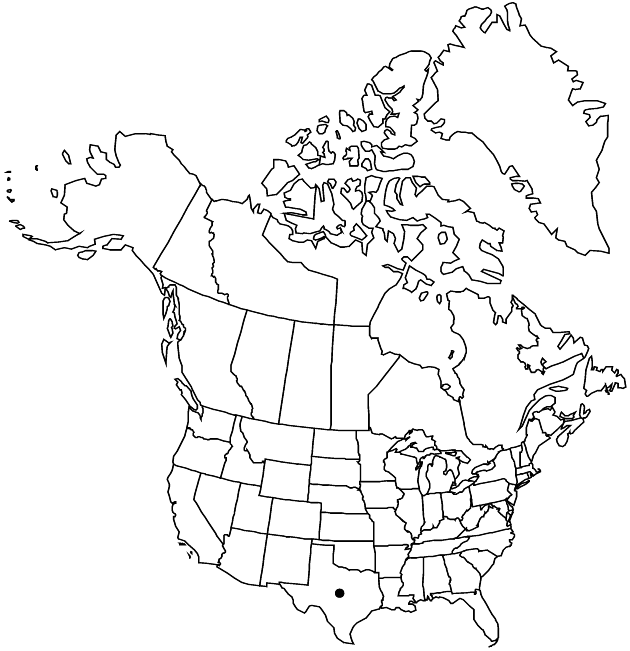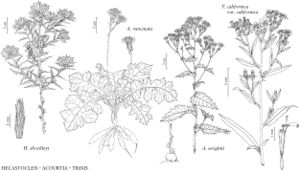Acourtia runcinata
Phytologia 38: 460. 1978.
Plants 5–35 cm. Leaves basal; petioles 0.5–9 cm; blades oblong-oblanceolate, 2.5–23 cm, bases cuneate, margins pinnately lobed (lobes ovate), spinulose-dentate, apices acute, faces hirtellous and/or finely stipitate-glandular. Heads borne singly or 2–3 together (on scapiform peduncles). Involucres turbinate, 14–17 mm. Phyllaries in 2–4 series, lanceolate to subulate (3–15 mm), margins glandular-hairy, apices acuminate, abaxial faces glandular. Receptacles reticulate, hispidulous. Florets 25–53; corollas pink or lavender-pink, 12–22 mm. Cypselae fusiform to linear-fusiform, 4–8 mm, stipitate-glandular and/or hispidulous; pappi tan or white, 1–17 mm. 2n = ca. 54.
Phenology: Flowering year round (mostly Mar–Aug).
Habitat: Juniper forests, oak woodlands, dry matorral, desert scrub on calcareous, sandy clay, and gypsiferous soils
Elevation: 0–1600 m
Distribution

Tex., Mexico (Chihuahua), Mexico (Coahuila), Mexico (Hidalgo), Mexico (Nuevo León), Mexico (San Luis Potosí), Mexico (Tamaulipas)
Discussion
Acourtia runcinata is the most widespread species of the genus, within which it is unique in possessing fasciculate, tuberous-fusiform roots. In the flora, it grows in central and southwestern Texas.
Selected References
None.
